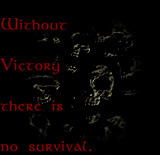|
|
 |
 |

Pojo's Magic The Gathering
Judge's Corner
7.11.03 Mantras Review: Mantras 3
and 4
To start off with, I have
gotten a lot of questions regarding putting Mantras 3
and 4 together. So I'm going to take the first part of
this column to explain to you how they go together.
First, the Mantras in question, along with one of the
footnotes:
3. "If the card doesn't say 'TARGET,' it doesn't
target." (31 May 02) (Footnote D)
4. "Protection is a DEBT we owe some of our permanents."
(26 September 02) (Footnote B)
Footnote B: DEBT is an acronym. It stands for Damage,
Enchantments, Blocking, and Targeting, which are the 4
things a creature with protection is protected from.
For an extended definition, protection is usually
written on a card as "Protection from [quality]." (For
example, "Protection from green.")
-Damage: All damage dealt to the permanent from a source
with the stated quality is prevented.
-Enchantments: The permanent can't be enchanted by
permanents with the stated quality.
-Blocking: The permanent can't be blocked by permanents
with the stated quality.
-Targeting: The permanent can't be targeted by spells
with the stated quality, or abilities from permanents
with the stated quality. (Remember Mantra #3.)
Footnote D: Local Enchantment cards being played (cast)
target the thing they're going to enchant. (27 January
03)
---
I tried to help you guys out at the end there, as the
key to protection is generally that it has to be
targeted or it had to do damage. If it does neither of
those things, your creature will die.
So, if you have a Mystic Crusader out (Protection from
Red and Black), and you do not have threshold, it will
be safe from the following things:
-Dark Banishing (targets)
-Earthquake (damage)
-Sickening Dreams (damage)
-Carbonize (targets and damage)
-Immolation (targets when cast, and can't be put on even
if it comes in by a way other than casting, due to
protection)
It will die to the following things, since the following
neither do damage nor are targeted:
-Engineered Plague (set to Nomads)
-Tsabo's Decree (again, choose Nomads)
-Mutilate
-Bane of the Living
-Misfortune
-Blocking Suq'ata Lancer (flanking penalty)
-Flowstone Surge (you control)
-Chainer's Edict (targets the player, not the creature)
Remember, if it doesn't say "TARGET," and it doesn't do
damage, protection won't help it.
---
Now, on to the other questions...
Q: If I use Hermit Druid, and don't find a basic land,
thus running out of cars in my library, do I deck out
and lose or does the power just end and I lose next
turn?
-gobi
A: A player only loses when he can not draw a card.
Since Hermit Druid doesn't make you draw cards, you will
be safe until the next time you have to draw a card.
---
Q: If I have both Furnace of Rath and Noble Purpose out,
would I gain twice as much life?
-Luke C.
A: Here is Furnace of Rath's Eighth Edition wording,
courtesy of the Oracle:
Furnace of Rath
{1}{R}{R}{R}
Enchantment
If a source would deal damage to a creature or player,
it deals double that damage to that creature or player
instead.
Since the creature is dealing double the damage, then
yes, you gain the doubled damage in life.
---
Q: If I have a mixture of elves and beasts out in play
and my opponent uses Tsabo's Decree naming "beast Elf",
does this destroy all my creatures. They all have either
the creature type beast or elf in the type line but
never "beast elf". Can he destroy all my creatures like
that?
-Eddie
A: 212.1e If an instruction requires choosing a subtype,
you must choose one, and only one, existing subtype, and
the subtype you choose must be for the appropriate type.
For example, you canít choose a land type if an
instruction requires choosing a creature type. (Use the
Oracle card reference to determine whether a creature
type exists; see rule 200.2.)
So he can choose either beast or elf, but not both.
See you Monday.
Bill Guerin
DCI Level 2 Judge
|



